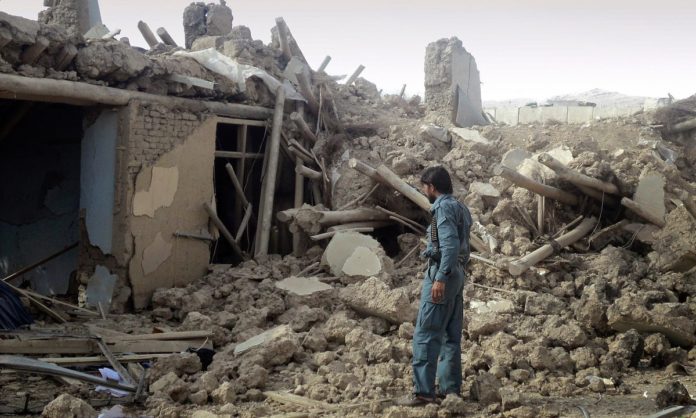
by Jim Hume
November 11th, 2017
When we remember the fallen we sometimes forget events like November 14, 1940, an ear-nipping cold and crisply clear evening and a perfect setting for the rise of an orange-tinted, full Hunter’s Moon. It was 7 p.m. and I was just off a 12-hour shift at Alfred Herbert’s machine tool factory waiting for a bus to take me nine miles home.
At 7:10 p.m. air raid sirens began their ululating wail to warn “hostile aircraft” were in the vicinity. And, just a few minutes later incendiary bombs – small cylinders containing either gasoline or phosphorous – came clattering over roof tops to challenge the moon for the right to light the streets. Like most 16-year-olds I knew the incendiary drill. Crash a bag of sand to block the bright mini-fire or lacking sand bags use a garbage can lid. Or anything else to deprive heavy duty bombers from following a clear-lit path to whatever was their target for the night. Incendiaries were not large, but they burned bright.
At around 7:30 the first high explosives began to fall. It would be 11 more hours before the last tumbled from the skies. Thankfully, we didn’t know that, we just thought the German Luftwaffe was starting a little earlier than usual so would be finished and back home in Europe after a four-hour nuisance raid leaving us to catch a few hours’ sleep.
My bus arrived about the same time, I scrambled on and with a bus load of other workers headed for home. As we reached the outskirts of the city the driver shouted we should look out the back window and see what we had just left. It was only eight o’clock and a great fire was already burning, pulsating like a heartbeat each time another high explosive bomb struck home. The entire centre of the city looked to be on fire and in the middle of the flames was the centuries old St. Michaels Coventry Cathedral. But, we didn’t know that until morning came.
Actually, it wasn’t until the afternoon of the 15th that I got to see the results of the raid – code named Operation Mondscheinsonate (named afte Beethoven’s Moonlight Sonata). All night I had watched Coventry burn from nine miles away, forbidden to return by old soldier parents until the bombing stopped. It would be 6:30 a.m. before the all clear sounded and half a dozen of us, all 15 or 16 years old, climbed on our bikes and rode back into the still burning city to help where we could.
The city had been without power or water since the first wave of 500 bombers began unloading 500 tonnes of high explosives and 36,000 incendiaries killing 568 and seriously injuring more than 1,000 more. The dead were buried five days after the raid in a mass grave in London Road Cemetery. A small, white curved wall records their names.
With our factory without power and water we ran errands, delivered messages and tried to look brave when a bundle of rags that was once human beings was pulled from wreckage. It was late afternoon getting dusk, low cloud, no visible moon when I saw the shattered Cathedral, walls still standing around a pile of rubble and fire blackened roof timbers. Someone had bound two charred beams together in a cross and placed it where the altar had once stood. On the shattered wall behind someone had chalked “Father forgive.” The original cross is now stored safe from the elements, but a replica still stands where it was originally placed. The chalked message faded with the years but now remains unchanged on a more permanent bronze plaque.
Coventry would suffer 18 more air raids, but none as massive as Moonlight Sonata, although two came close. On the night of April 8/9 in 1941 some 289 civilians were killed, 470 seriously injured. The following night, 170 died, 150 badly wounded.
Within months those numbers became minor in the killing game as Allied air forces responded with mass destructions of property and civilians in Dresden, Cologne, Stuttgart, Hamburg, Berlin and other German cities. The estimated civilian dead totalled 600,000 including 76,000 children.
In 1945, single bomber raids on Hiroshima and Nagasaki and two nuclear bombs eclipsed them all in terror, death and destruction.
In 1958, Canon Joseph Pool wrote The Coventry Litany of Reconciliation. It is still prayed at noon each weekday in the new Cathedral which remains firmly linked to the shell of the old. And every Friday at noon the brief ceremony moves to ancient St. Michaels to pray in front of the charred cross for an end to “the hatred which divides nation from nation, race from race, class from class” and from “the covetous desires of people and nations to possess what is not their own’’ and “the greed which exploits the work of human hands and lays waste the earth” and “our envy of the welfare and happiness of others” and “our indifference to the plight of the imprisoned, the homeless and the refugee.”
“Father forgive,” is the response to each reminder of human failings. But, it is not made on behalf of others, but for ourselves. It’s not a bad litany for Remembrance Day – the day we remember our dead but sometimes forget who they were.
You can follow Jim’s regular features HERE


